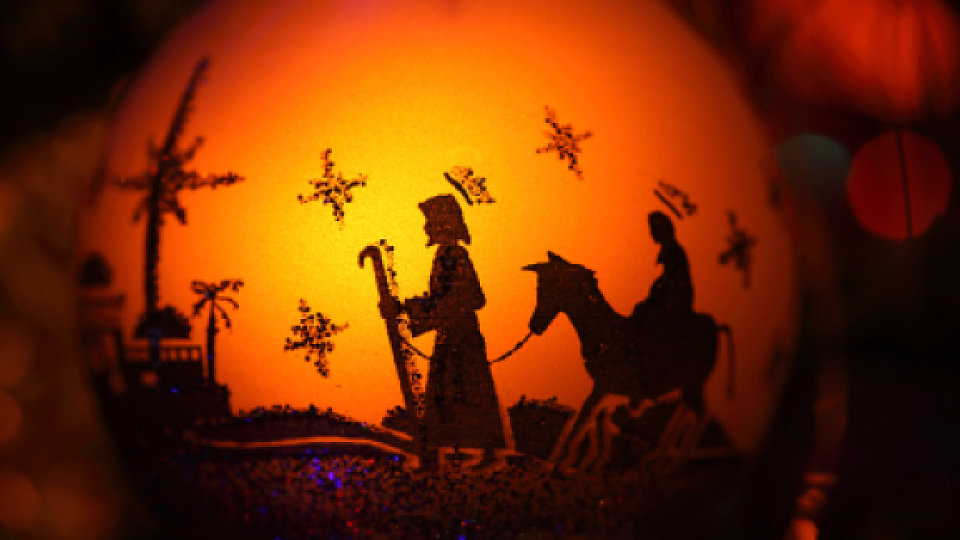The Journey: From Nazareth to Bethlehem
In my trip to the Holy Land to research my book, The Journey, we traveled by car, by van, and on foot as we sought to follow the journey Mary and Joseph would have taken from Nazareth to Bethlehem.
Their journey began with a descent from the hills of Nazareth to the smooth plain of the Jezreel Valley. You can see this area in today’s video (posted below). This would have been the easiest part of the journey and may have taken the first two days. This valley was the location of so many ancient battles that it became synonymous with war and bloodshed. The writer of Revelation saw the final, apocalyptic battle between good and evil—the battle of Armageddon—taking place here. (Armageddon means “hill of Megiddo,” with Megiddo being a city built upon a hill along the Jezreel Valley—see Revelation 16:16). As we passed through this valley, I was reminded that the child in Mary’s womb would be called the Prince of Peace; yet it was also this child who John claimed would one day return, riding on a white horse, to wage a righteous war against evil and ultimately to triumph over it (Revelation 19:11-16).
As Mary and Joseph began the slow ascent from the Jezreel Valley, they would have walked past mile after mile of olive trees, planted in groves along the road. The oldest of the trees that still exist today are said to date back to the time of Christ. The olive trees, like the journey itself, bore witness to the child in Mary’s womb. The extra-virgin oil from the olives was used in the anointing of kings; in fact, the word Messiah means Anointed One. (The Greek word Christ means the same.) Pouring or smearing sacred oil on a person or an object signified that the individual or object was holy to God and set apart for God’s purposes.
Kings were typically anointed by the high priest, though David was anointed by Samuel the prophet. Jesus, however, was anointed by a prostitute in Luke 7:36-50 and by Lazarus’s sister Mary in John 11:1-2 (and presumably in Mark 14:3). These incidents were important statements about Jesus’ concern for sinners and those whom Jewish society considered to be second class; Jesus valued these persons so highly that they were given the privilege of anointing him as king.
After several days, the journey to Bethlehem would have become more challenging, following the ancient road that curved back and forth as it ascended and descended the hills and mountains of central Israel. Each day’s journey would have ended at a spring or well that could provide for the needs of all the people and animals in the caravan. We stopped at two such places, Jacob’s Well in Sychar, where Jesus met the Samaritan woman.
The grade of the city of Sychar has risen over the centuries with the destruction and rebuilding of city upon city. Today, the well is beneath a magnificent church built by the Russian Orthodox. Descending a set of steps to the left of the altar, visitors come to a room with an ancient well. There, a bucket is attached to a rope, and when lowered for what must be one hundred feet, it finally takes on water. As I drew water from the well, I imagined Joseph and Mary drinking from this same water source as they rested here for the night. Little did Mary know that thirty-three years later, the child in her womb would stand here, offering living water to a Samaritan woman.
Mary and Joseph continued on their journey from Sychar, traveling for the next three days over ever-higher hills. For Mary, this would have been the most difficult and uncomfortable part of the journey. The Holy Family would have been traveling now for seven days. “Soon,” Joseph must have assured Mary, “we’ll be going down to Bethel, and then on to Jerusalem and Bethlehem. We’re going to make it. You’ll be fine, Mary.”
On the afternoon of the ninth day, or early on the morning of the tenth, Mary and Joseph finally must have seen Jerusalem. I can only imagine how they felt as they saw the Holy City spread out before them. Jerusalem was of course much smaller in the first century. It was a city set upon a hill—actually multiple hills— but the eye was naturally drawn to one hill, Mount Moriah, where the Temple rose high above everything else.
From Jerusalem, it would have been only a few hours’ walk to Bethlehem, across several miles of arid desert and some hills. Finally, on perhaps the tenth day of their journey, they would have arrived in Bethlehem.
~~~
Today's post is an excerpt from The Journey. For more information, visit The Journey website at journeythischristmas.com.



Comments
blog comments powered by Disqus